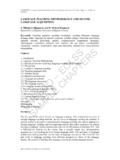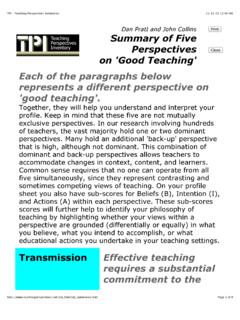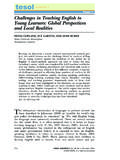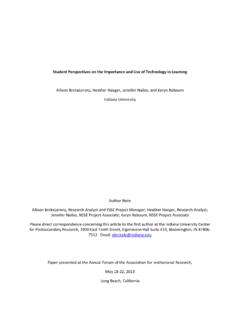Transcription of Benefits and Challenges of Diversity in Academic …
1 Benefits and Challenges of Diversity in Academic SettingsBenefits and Challenges of DiversityThe Diversity of a university s faculty, staff, and students influences its strength, productivity, and intellectual personality. Diversity of experience, age, physical ability, religion, race, ethnicity, gender, and many other attributes contributes to the richness of the environment for teaching and research. We also need Diversity in discipline, intellectual outlook, cognitive style, and personality to offer students the breadth of ideas that constitute a dynamic intellectual vast and growing body of research provides evidence that a diverse student body, faculty, and staff Benefits our joint missions of teaching and research by increasing creativity, innovation, and problem-solving.
2 Yet Diversity of faculty, staff, and students also brings Challenges . Increas-ing Diversity can lead to less cohesiveness, less effective communica-tion, increased anxiety, and greater discomfort for many members of a to respect and appreciate each other s cultural and stylistic differences and becoming aware of unconscious assumptions and behaviors that may influence our interactions will enable us to minimize the Challenges and derive maximum Benefits from booklet summarizes research on the Benefits and Challenges of diver-sity and provides suggestions for realizing the Benefits . Its goal is to help create a climate in which all individuals feel personally safe, listened to, valued, and treated fairly and with respect.
3 2 It is time to renew the promise of American higher education in advancing social progress, end America s discomfort with race and social difference, and deal directly with many of the issues of inequality present in everyday life. Sylvia Hurtado Several investigators found that women and faculty of color more frequently employed active learning in the classroom, encouraged student input, and included perspectives of women and minorities in their for StudentsNumerous research studies have examined the impact of Diversity on students and educational outcomes. Cumulatively, these studies provide extensive evidence that Diversity has a positive impact on all students, minority and examples are: A national longitudinal study of 25,000 undergraduates at 217 four-year colleges and universities showed that institutional policies fostering Diversity of the campus community had positive effects on students cognitive develop-ment, satisfaction with the college experience, and leadership abilities.
4 These policies encouraged faculty to include themes relating to Diversity in their research and teaching , and provided students with opportunities to confront racial and multicultural issues in the classroom and in extracurricular Two longitudinal studies one conducted by HERI in 1985 and 1989 with over 11,000 students from 184 institutions, and another in 1990 and 1994 on approximately 1500 students at the University of Michigan showed that students who interacted with racially and ethnically diverse peers both infor-mally and within the classroom showed the greatest engagement in active thinking, growth in intellectual engagement and motivation, and growth in intellectual and Academic skills.
5 11 A more recent study of 9,000 students at ten selective colleges reported that meaningful engagement rather than casual and superficial interactions led to greater benefit from interaction with racially diverse for teaching and ResearchResearch shows that diverse working groups are more productive, creative, and innovative than homogeneous groups, and suggests that developing a diverse faculty will enhance teaching and findings are: A controlled experimental study of performance during a brainstorming session compared ideas generated by ethnically diverse groups composed of Asians, Blacks, Whites, and Latinos to those generated by ethnically homog-enous groups composed of Whites only.
6 Evaluators who were unaware of the source of the ideas found no significant difference in the number of ideas generated by the two types of groups. However, when applying measures of feasibility and effectiveness, they rated the ideas generated by diverse groups as being of higher The level of critical analysis of decisions and alternatives was higher in groups exposed to minority viewpoints than in groups that were not. Minority view-points stimulated discussion of multiple perspectives and previously unconsid-ered alternatives, whether or not the minority opinion was correct or ultimately A study of corporate innovation found that the most innovative companies deliberately established diverse work Data from the 1995 Faculty Survey conducted by UCLA s Higher Education Research Institute (HERI)
7 Demonstrated that scholars from minority groups have expanded and enriched scholarship and teaching in many Academic dis-ciplines by offering new perspectives and by raising new questions, Challenges , and Multiple studies demonstrate that minority students often feel isolated and unwelcome in predominantly white institutions and that many experience discrimination and differential treatment. Minority status can result from race, ethnicity, national origin, sexual orientation, disability and other Women students, particularly when they are minorities in their classes, may experience unwelcoming climates that can include sexist use of language, presentation of stereotypic or disparaging views of women, differential treatment from professors, and/or sexual Research has demonstrated that a lack of previous positive experiences with outgroup members (minorities) causes ingroup members (majority members) to feel anxious about interactions with minorities.
8 This anxiety can cause majority members to respond with hostility or to avoid interactions with Data from the National Study of Student Learning indicated that both in-class and out-of-class interactions and involvement with diverse peers fostered criti-cal thinking. This study also found a strong correlation between the extent to which an institution s environment is perceived as racially nondiscriminatory and students willingness to accept both Diversity and intellectual A survey of 1,215 faculty members in departments granting doctoral degrees in computer science, chemistry, electrical engineering, microbiology, and physics showed that women faculty played important roles in fostering the education and success of women graduate of DiversityDespite the Benefits that a diverse faculty, staff, and student body provide to a campus.
9 Diversity also presents considerable Challenges that must be addressed and examples include: Numerous studies have reported that women and minority faculty members are considerably less satisfied with many aspects of their jobs than are majority male faculty members. These aspects include teaching and committee assign-ments, involvement in decision-making, professional relations with colleagues, promotion and tenure, salary inequities, and overall job A study of minority faculty at universities and colleges in eight Midwestern states showed that faculty of color experience exclusion, isolation, alienation, and racism in predominantly white as easily measured as height, what happens when the qualities we are evaluating are not as objective or as easily measured?
10 What happens when, as in the studies of athletic ability and choice of counselor, the generalizations are not valid? What happens when such generalizations unconsciously influence the ways we interact with other people?Examples of assumptions or biases that can influence interactions: When rating the quality of verbal skills as indicated by vocabulary definitions, evaluators rated the skills lower if told that an African American provided the definitions than if told that a White person provided When asked to assess the contribution of skill versus luck to successful performance of a task, evaluators more frequently attributed success to skill for males and to luck for females, even though males and females performed the task Evaluators who were busy, distracted by other tasks, and under time pressure gave women lower ratings than men for the same written evaluation of job performance.









